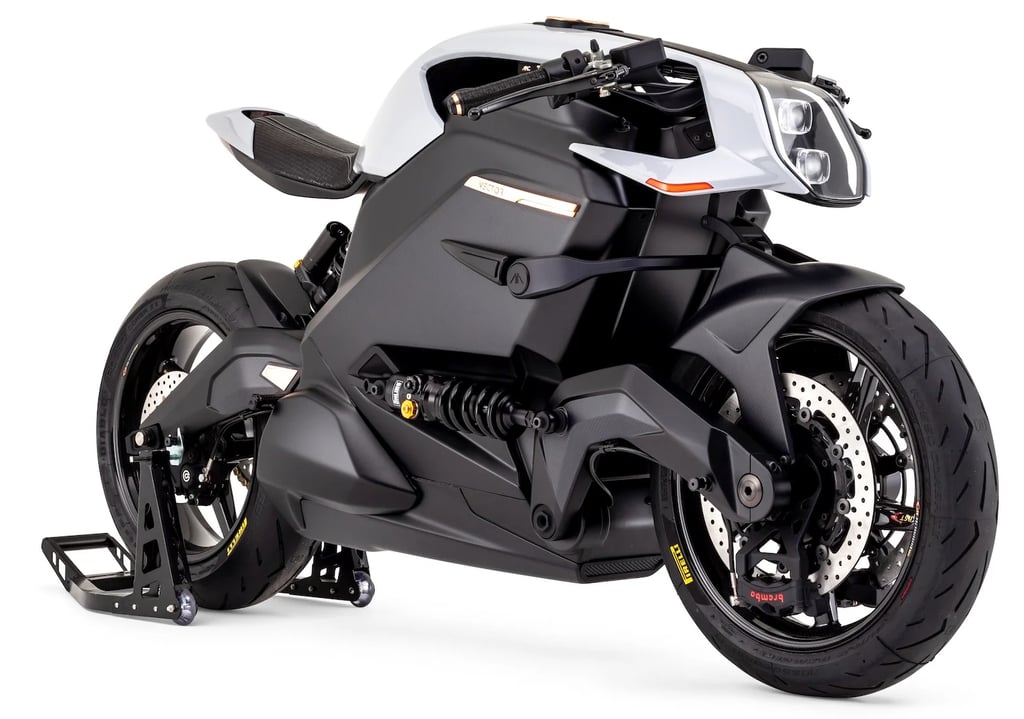Navigating the Blurred Lines: E-Bikes and the Moped Conundrum
This article explores the blurred lines between e-bikes and mopeds, as technological advancements in e-bikes are challenging the traditional boundaries. The introduction of advanced human/machine interfaces, such as pedal-assist systems and throttle controls, are reshaping the riding experience and blurring the distinction between e-bikes and mopeds. The article also discusses the legal and regulatory challenges that arise from these evolving vehicles, as well as real-world examples of advanced e-bikes. It concludes by highlighting the need to redefine how we perceive and regulate these innovative vehicles as technology continues to advance.
2020'SELECTRIC
12/9/20233 min read


Navigating the Blurred Lines: E-Bikes and the Moped Conundrum
Electric bicycles, commonly known as e-bikes, have transcended their humble origins to emerge as a distinct category in the realm of urban mobility. Evolving from mere alternatives to traditional bicycles, these electric wonders now boast sophisticated mechanisms that challenge the conventional boundaries between e-bikes and mopeds.
Amid this evolution, a compelling argument surfaces: can certain e-bikes, especially those equipped with advanced human/machine interfaces, be rightfully classified as mopeds? At first glance, such a proposition may seem implausible, considering the inherent disparities in design, functionality, and cultural connotations between mopeds and e-bikes. However, as e-bikes progress, integrating technology that transforms them from basic mobility aids into complex machines, the distinction becomes less clear-cut.
To unravel this argument, a comprehensive analysis of the changing landscape of electric bicycles is imperative. Technological advancements, ranging from increased speed capabilities to extended battery life and innovative features, are expanding the very definition of a 'bicycle.' The introduction of new control systems, such as Pedal Assist Systems (PAS) and throttle controls, enhances the riding experience, bringing it remarkably close to the realm of mopeds.
Technological Transition: The Heart of the Matter
The crux of this transition lies in understanding the technological features marking this shift. Advanced human/machine interfaces play a pivotal role, reshaping the way riders interact with their e-bikes. Traditionally limited to a simple on-off function, these interfaces now offer a spectrum of control. Pedal-assist systems, or Pedelecs, engage the e-bike's motor only when the rider pedals, creating a symbiotic relationship between human effort and automated response.
Throttle controls, akin to those found in mopeds or motorcycles, allow riders to engage the motor without pedaling, providing an experience almost identical to that of a moped. Advanced gear systems, integrated GPS, and digital displays further elevate the functionality of e-bikes, pushing them into what was once considered exclusive territory for mopeds.
Legal and Regulatory Crossroads
The discussion naturally extends to legal and regulatory frameworks, which traditionally defined e-bikes and mopeds based on speed, mode of propulsion, and other criteria. However, as e-bikes with advanced human/machine interfaces proliferate, questions arise about the adequacy of current definitions. Jurisdictions worldwide differ in their regulations, with some not even recognizing e-bikes as a separate category.
This legal ambiguity carries diverse implications, from potential regulatory challenges for enforcement agencies to a maze of laws that e-bike riders must navigate across different regions. The lack of uniformity in definitions raises pertinent questions about whether existing legal frameworks can effectively distinguish between these evolving vehicles.
Real-World Transformations: A Glimpse into Tomorrow
Real-world examples underscore the transformative potential of advanced e-bikes. The Arc Vector, touted as the world's most advanced electric motorcycle, integrates a fully integrated Human Machine Interface (HMI). With features like custom Öhlins dampers and Brembo Stylema brake systems, this high-tech e-bike achieves optimal agility and performance without sacrificing rider comfort.
Yamaha's Motoroid 2 takes innovation a step further with a self-riding electric motorcycle featuring a haptic human-machine interface. Using image recognition AI and the Active Mass Center Control System (AMCES), it offers an autonomous, precise, and engaging riding experience, challenging preconceived notions about what a bicycle can be.
Challenges and Counterarguments: Riding the Path Ahead
Acknowledging potential counterarguments and challenges is crucial to this discourse. While advancements in e-bike technology align them with mopeds in certain aspects, fundamental features like the ability to solely pedal-power an e-bike remain distinctive. Additionally, reclassifying e-bikes as mopeds could impose barriers for riders, potentially counteracting the purpose of making these innovations more accessible.
Safety considerations also weigh heavily in the argument. While technology enhances the riding experience, it can potentially increase risk due to higher speeds, especially for inexperienced riders. Stricter safety regulations might be warranted if e-bikes were to be reclassified as mopeds.
Conclusion: The Road Ahead
The classification debate surrounding certain e-bikes as mopeds is multifaceted, driven by rapid technological advancements and perceptible shifts in electric mobility. As explored, the incorporation of advanced human/machine interfaces aligns e-bikes with characteristics traditionally associated with mopeds, prompting a reassessment of current classifications. This transition isn't merely technological; it carries broader implications for riders, manufacturers, policymakers, and the entire spectrum of electric mobility.
While the ongoing debate seeks a conclusive stand, the process provides invaluable insights into the dynamic narrative of e-bikes. This quest for synergy between human and machine not only challenges existing categorizations but also shapes the future of electric mobility. As technology continues to advance, the lines between e-bikes and mopeds may blur further, urging us to redefine how we perceive and regulate these innovative vehicles. The journey of e-bikes is a testament to the evolving landscape of transportation, where the intersection of innovation and regulatory complexity opens new dimensions of possibility and raises profound questions about the future of urban mobility.
